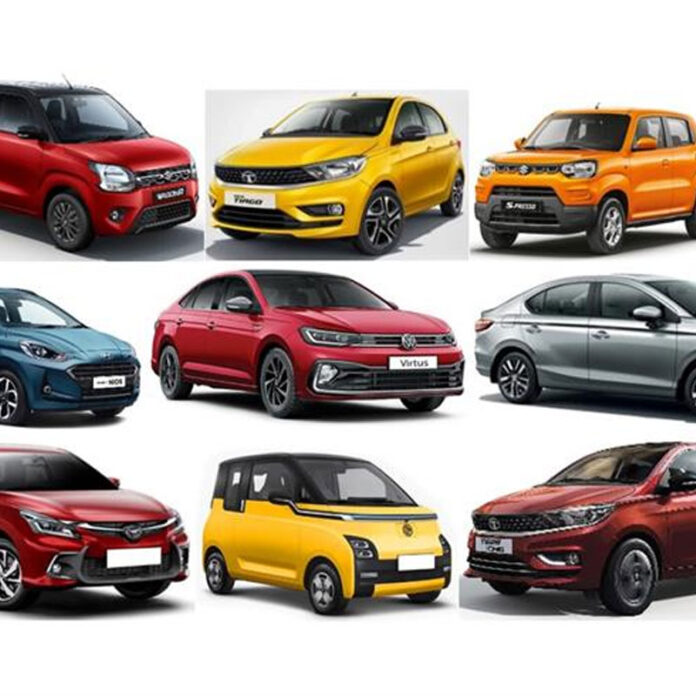
The decline in sales of entry-level cars is not merely a result of shifting market dynamics or changing consumer preferences. Instead, it serves as a stark indicator of a more profound economic crisis unfolding in India. It underscores the erosion of the country’s economic foundation, highlighting the economic disparities. While India is on the path to becoming a USD 5.00 trillion economy, its growth is far from inclusive and pyramidal. Economists have coined terms like “K-shaped growth” to avoid acknowledging the fact that the wealthy are growing wealthier while the less fortunate face economic hardships.
The entry-level car segment, the base of the economic pyramid, has been struggling for a significant period. Recent reports have shed light on this discomforting reality, with several television debates dedicated to the topic.
The July to September quarter witnessed a staggering 75% decline in the entry-level car segment. The early reports from October do not offer much solace, despite efforts to bolster sales during the festive season. The leader of India’s prominent automaker has expressed concerns, stating that the entry-level passenger vehicle market, crucial for sustained growth, will take 2-3 years to recover.
The definition of ‘entry-level’ has evolved significantly since the turn of the millennium. The Maruti 800 once held this distinction, but it was succeeded by the Alto after the Nano’s failure. Prices have increased substantially since then, raising questions about what truly constitutes an affordable entry-level vehicle in India. While some may argue that used cars are an option, the used bike market provides a counterargument. The price point has nearly doubled in two decades, making it necessary to question whether buying power and savings have increased proportionally.
This decline in the entry-level segment is not solely a post-COVID-19 phenomenon. It started after Diwali in 2018 and resulted from a combination of factors, including demonetization, GST implementation, and erratic monsoons. The pandemic lockdown in March 2020 further exacerbated the situation, leading to job losses, salary cuts, and significant economic challenges for many. According to government data from 2023, over 40% of India’s graduates under the age of 25 struggle to find jobs.
The Economic Survey of 2022-23 reveals that India’s saving rate has been gradually declining since 2010-11. Meanwhile, unemployment has risen to 10.85% in October 2023, surpassing the pre-pandemic levels. While India’s economic growth is moving toward the USD 5 trillion mark, it is clear that this growth is not evenly distributed. Economists use terms like “K-shaped growth” to describe the widening wealth gap. The 4-wheeler segment is mirroring this trend, with those who already own cars purchasing more expensive vehicles. This trend has been fueled by youth with jobs and an affluent middle class that has grown wealthier.
The decline in 2-wheeler sales since the end of 2018 has directly impacted the entry-level 4-wheeler segment. However, some sections of the media have perpetuated a positive narrative about 4-wheeler sales over the past year, focusing on SUVs, sunroofs, and luxury vehicles.
4-wheeler manufacturers have moved the price point upward, making cars unaffordable for millions of Indian motorbike and scooter riders but profitable for themselves. Investments in electrification and digitization cannot come at the expense of the entry-level segment. The profit motive seems to be overshadowing the greater goal of democratizing mobility.
The automotive industry may argue that safety and emissions regulations have increased costs, leading to higher prices for consumers. However, it is essential to recognize that if manufacturers aim for larger volumes, the per-unit impact of these improvements will decrease. It has been demonstrated in other industries such as white goods, consumer durables, and smartphones, and it can certainly apply to automobiles.
The high GST imposed on smaller cars may also be cited as a factor, but it is the industry’s responsibility, led by its industry body, to present scenarios to policymakers on how to revive the entry-level segment with a lower and more sensible GST rate. This could increase revenue to cover the perceived tax losses.
The short-sighted profit motive of automakers does not bode well for the market’s future. Once the upper middle class has exhausted their desire for more expensive cars, the pipeline will run dry. Their younger generation may find personal transportation less appealing, and two-wheeler riders may opt for better bikes or improved public transport.
While other industry segments in India are advancing with electrification and new mobility solutions, the 4-wheeler segment remains at odds. The 2-wheeler segment has been steadily building its pyramid, but the entry-level 4-wheeler segment’s base continues to weaken.
In any developing economy, sustainable automotive market growth has historically begun from the base of the pyramid and progressed upward. In India, close to 58% of young adults aspire to own a car, with approximately 25% of them being potential first-time buyers. However, it is up to automakers and policymakers to facilitate their entry into the market. Repairing the pyramid is the need of the hour.








